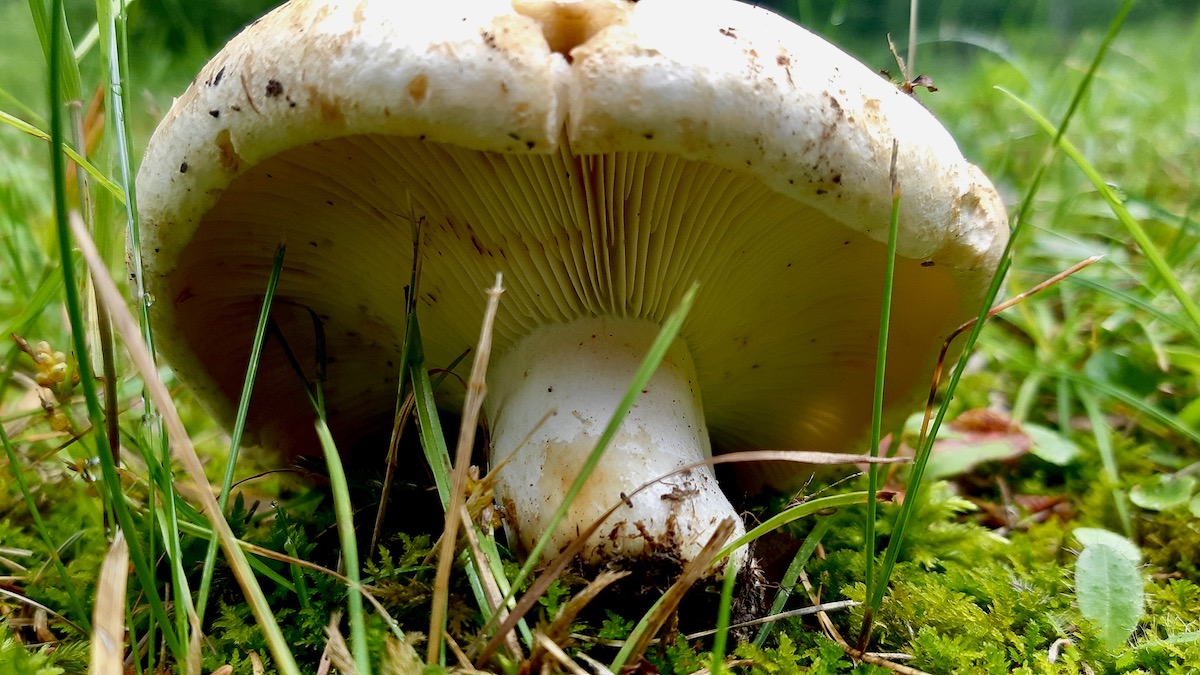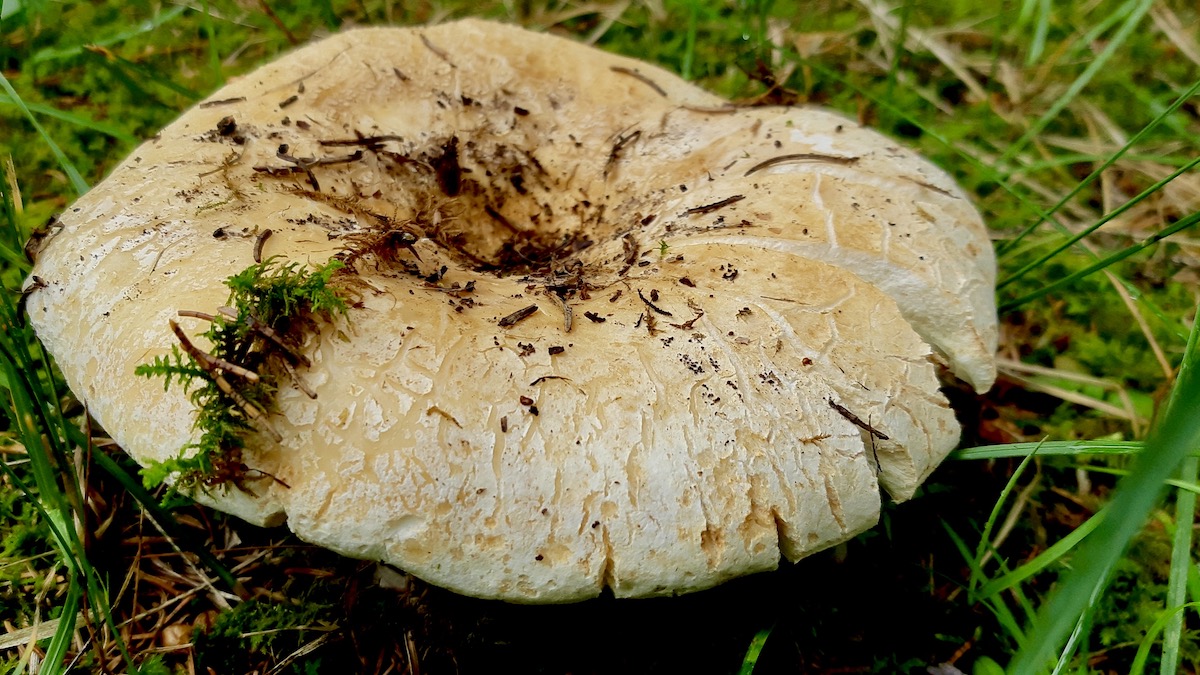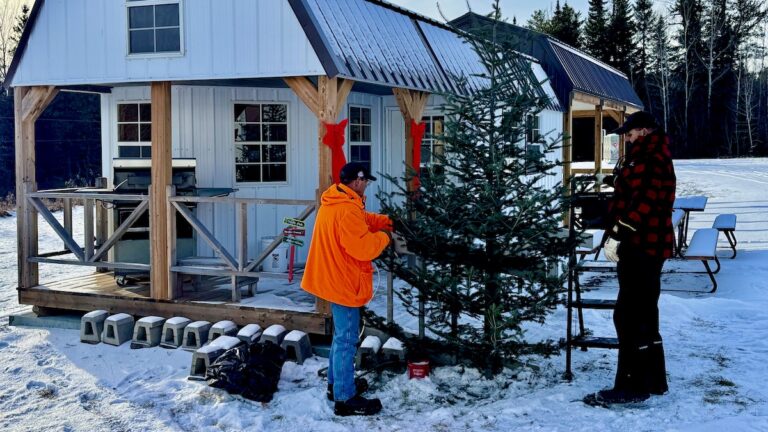
Meet the Scrobiculate Milkcap, a fascinating resident of our local pine forests. Its unique depressed cap and sturdy stem are just a prelude to the vibrant yellow interior revealed when its flesh is broken. Nature's details truly are incredible!
A Glimpse into the Forest’s Hidden Gems
It’s late July, and surrounding the ancient pines of Northwestern Ontario, a striking and rather mysterious inhabitant of our local forests often goes unnoticed by the casual observer. This is the mushroom known as the Scrobiculate Milkcap, scientifically identified as Lactarius scrobiculatus. While not a culinary delight, its beauty and intricate ecological role make it a truly amazing subject for photography and a deeper appreciation of our natural world.
Upon first glance, the Scrobiculate Milkcap presents a robust and creamy appearance. Its cap, often pale yellow to yellowish-orange, can develop a distinct central depression, becoming somewhat funnel-shaped as it matures. Look closely, and you might spot subtle, watery pits or depressions on its surface – these “scrobiculations” are a key feature and give the mushroom its descriptive name. The sturdy stem mirrors the cap’s pale hue and often displays similar intriguing pits, adding to its unique texture. Beneath the cap, you’ll find crowded, creamy gills, running elegantly down the stem, completing its captivating form.
What truly sets the Scrobiculate Milkcap apart, however, is a remarkable internal characteristic. If you were to gently break a piece of its flesh or a gill, you would witness a fascinating transformation: a white, milky liquid, known as latex, would emerge and rapidly change to a vibrant, bright yellow upon exposure to the air. This dramatic color shift is a defining trait of Lactarius scrobiculatus and a thrilling detail for any nature enthusiast or photographer seeking to capture the hidden wonders of the forest.

Unveiling the Mysterious Milkcap: A Photographer’s Delight
Beyond its visual appeal, the Scrobiculate Milkcap plays a vital, unseen role in the forest ecosystem. It forms a crucial mycorrhizal symbiotic relationship with the very trees it grows near, particularly conifers like the old pine trees found in our region. In this mutualistic partnership, the mushroom’s vast underground network of fungal threads (mycelium) intertwines with the tree’s roots. The fungus helps the tree absorb essential water and nutrients from the soil that might otherwise be unavailable. In return, the tree provides the fungus with sugars, produced through photosynthesis, which the mushroom cannot create on its own. This intricate exchange is a cornerstone of forest health, illustrating the complex and beautiful interdependencies that exist beneath our feet.
It’s also interesting to note how other unique forest dwellers fit into this web. You might find the striking Spotted Coralroot (Corallorhiza maculata) growing nearby. This unusual orchid, devoid of green leaves, doesn’t photosynthesize. Instead, it’s a “mycoheterotroph,” meaning it taps into the existing mycorrhizal networks between trees and fungi like Lactarius scrobiculatus. The coralroot essentially “borrows” nutrients already being exchanged, showcasing another layer of intricate relationships within the forest. So, the next time you wander through the pine forests of Northwestern Ontario, keep an eye out for the Scrobiculate Milkcap. Its presence is a testament to the unseen artistry and profound interconnectedness of nature, offering endless opportunities for appreciation and photographic discovery.




